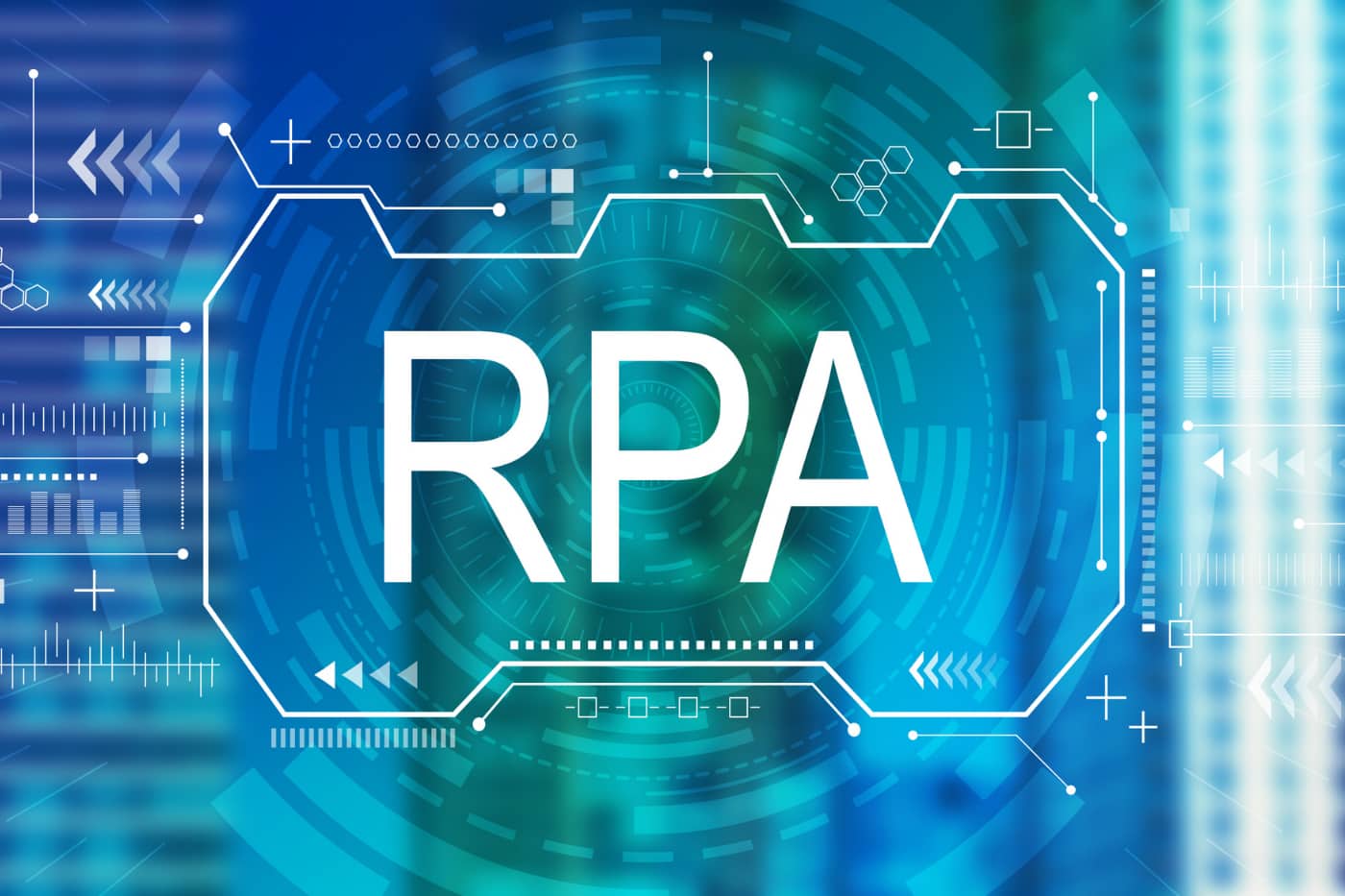5 Top Robotic Process Automation Tools in 2025

If you’re going to deploy automation within your organisation, then you’re likely scouting for the top robotic process automation tools. To help you on your journey, we’ve compiled everything you should know about robotic process automation, along with a look at the features, pros, and cons of the top five RPA tools.
Along with RPA tools, we will share complementary solutions that make data transformation, mapping, and analysis easy to achieve. This way, you can digitally transform your entire organisation utilising automated solutions that are simple to deploy.
Coming Up
1. What is Robotic Process Automation?
2. What are the Types of Robotic Process Automation?
3. How is RPA Different from Desktop Application?
4. What Are Common Features of RPA Tools?
5. What are the Benefits of RPA Tools?
7. What are the Challenges of RPA Tools?
9. What are the Top 5 Robotic Process Automation Tools?
What is Robotic Process Automation?
Robotic process automation (RPA) is a kind of technology that is able to replace the need for manual work performed by employees with the use of robots. In some cases, RPA and humans may even work together.
Robotic process automation is geared towards fulfilling finite, repetitive, and high volume tasks. As such, the software plays a big role in achieving operational efficiency and expediting workflows. RPA solutions don’t typically require the need for coding and can be deployed effortlessly.
What are the Types of Robotic Process Automation?
There are different types of robotic process automation solutions available. These span:
- Programmable bots: These bots require inputs and programming to execute tasks. This can be in the form of drag-and-drop interfaces or actual code, for example.
- Self-learning bots: This type of RPA software can pull data from screen capture videos of a human recording a task and then mimic the human’s actions by learning itself.
- Intelligent automation: Taking traditional RPA up a notch, intelligent RPA utilises artificial intelligence (i.e. natural language processing and machine learning) to understand data by itself, including unstructured data.
How is RPA Different from Desktop Application?
Robotic desktop automation (RDA) is robotic process automation on a small, single-user scale. It allows for a user to benefit from automated tasks like scraping a website for data or automatically pulling reports on a regular basis. In essence, it handles low-level to-do’s for a person working on their computer.
RPA typically runs on a server or in the cloud for an entire organisation or department. In this case, multiple users will benefit from the aid of the software to carry out the same process. For example, you can use RPA to manage invoice processing, which will look the same for any person within the finance department who accesses the RPA software.
What Are Common Features of RPA Tools?
RPA tools are generally an organisation’s first step in introducing automation. This is because RPA has high returns that are basically immediate. Additionally, RPA bots are very easy to deploy because once you choose a vendor, the system is ready to integrate and run within your organisation without having to utilise a team of IT experts.
Even though there are many different options for RPA tools on the market, most of them, especially the top robotic process automation tools, will provide similar features, including:
- No code automation
- Attended or unattended bots
- Automated data extraction
- Pre-built templates
- Scalability
- Browser automation
- Drag-and-drop interface to build bots
- Work queues
- Analytics
What are the Benefits of RPA Tools?
RPA tools are not only a great way to begin your automation journey, but they also provide many benefits to an organisation of any size, in any industry. You have many opportunities to use RPA, and as such, the upsides can continue to grow as you continue to expand its use cases.
Some of the benefits of the top robotic process automation tools are:
- Lowered costs: You can introduce RPA into your workforce at reduced costs and also alleviate the time it takes your team to complete certain tasks, thereby saving money in both the short-term and long-term.
- Increased efficiency: Since many business processes are repetitive by nature, having a software solution that can quickly manage these tasks will boost productivity.
- Improved analytics: With the massive amount of data available, it is only right that it gets used for the business’ benefit. RPA bots can handle data in multiple formats to transform it into valuable insights.
- Scalability: With RPA serving as a virtual workforce, you can get more done in less time and be able to grow your business without exhausting your human resources
Who Uses RPA Tools?
Robotic process automation tools are being used by small, mid-size, and large businesses around the world. All departments within an organisation can reap the rewards of having an RPA system in place because every work function has some type of repetitive, manual, and high volume task.
RPA is commonly found in industries like: finance, insurance, retail, healthcare, manufacturing, and retail. Departments such as sales, accounting, HR, marketing, and more all use RPA to complete processes efficiently.
What are the Challenges of RPA Tools?
Although RPA tools offer immense benefits, there are some challenges with introducing them into organisations. In many instances, your team may feel like their jobs are being replaced by robots.
To overcome this hurdle, it’s necessary to focus on change management and showcasing how RPA is meant to remove the tedious tasks from your team’s workflows to instead free them up to focus on higher-level and strategic tasks.
Additionally, RPA is somewhat limited in scope. If you choose an RPA tool that is programmable, it will only be able to work with structured data.
To maximise your automation abilities, you can select a tool like SolveXia, which offers human analytical automation to transform your organisation into a powerhouse of usable information and automated workflows.
How to Choose RPA Tools?
When comparing RPA tools, there’s a lot to look for. Of course, you’ll want to pick a tool that is easy to use for everyone within your organisation. It’ll also be imperative to choose a tool that is affordable.
In order to help you through the selection process, consider going through these steps:
- Make a long list of all the solutions you can consider. Also, list your business goals to ensure that these solutions will help you get closer to your goals.
- Then, begin to cross some solutions off your list. To do so, you can conduct demos, ask questions, and read reviews.
- Once you have a shortened list, make sure to evaluate each tool by demoing the product and receiving feedback from your team.
What are the Top 5 Robotic Process Automation Tools?
Although there are countless RPA tools, we’re here to help you narrow down the playing field. As such, we’ve compiled a brief review of the five top robotic process automation tools.
Consider this your short list!
1. SolveXia
Features
SolveXia is a human analytical automation solution that can be used to complement robotic process automation tools and more. SolveXia ingests data from disparate systems and is able to combine, sort, filter, and map said data to provide visual results (i.e. dashboards and reports).
Features include: bank-grade security, advanced analytics, end-to-end automation, scalability, and governance by design.
Pros
SolveXia is a user-friendly platform that doesn’t require any coding to deploy. Instead, business professionals can easily become process designers through the drag-and-drop functionality of the software.
It is trusted by many of the world’s largest banks and financial institutions because of its encryption and top-notch security. Users can also automate reports and customise dashboards.
Some of SolveXia’s use cases include: performing reconciliations, preparing revenue reports and regulatory reports, conducting forecasting, and analysing and allocating expenses, to name a few.
Cons
SolveXia provides many benefits, however, there is no artificial intelligence inherently in the platform. That being said, SolveXia works extremely well alongside RPA and an AI tool.
2. Blue Prism
Features
Blue Prism is a robotic process automation software that provides many features, such as: versatilite software robots, a side-by-side comparison of process changes, and an automation library which can help you select what tasks. The system is built on the Microsoft .NET Framework, so it’s reliable.
Pros
On the upside, Blue Prism is web-based and said to be easy-to-use. It’s simple to choose bots and processes to automate given the library.
Cons
The user interface has been noted to look somewhat outdated. Although this doesn’t affect the actual capabilities, it is less visually appealing, which may put a damper on certain departments like sales. There is no intelligent automation feature.
3. Automation Anywhere
Features
Automation Anywhere can be deployed on the cloud or on premise with servers. It features real-time reports and analytics, bank-grade security through encryption, and several types of RPA bots (i.e. meta bots, task bots, IQ bots).
Pros
Automation Anywhere is said to be easy to use by developers and non-developers alike. It is scalable, and the vendor offers training and certifications.
Cons
Some users report that the integrations are not as strong as they’d wish, even in the case of extracting data from Excel spreadsheets. Data extraction proves to be time-consuming, which can be problematic.
4. UiPath
Features
UiPath offers RPA for any size organisation with features like: encryption and security, an open platform, and speedy automation.
Pros
To deploy UiPath, no coding is necessary. The drag-and-drop feature makes it usable by people with limited technical knowledge. Additionally, it is free of cost for small teams who use the community edition. For the enterprise version, you must contact the vendor for pricing.
Cons
Users report that there is limited coding functionality. Additionally, users desire better document management.
5. Pega
Features
Medium and large sized businesses can leverage Pega as a business process management tool. It is a cloud-based solution that stores all data in its memory, rather than in a database.
Pros
It’s all focused on events, so the system works quickly and is reliable. It can be scaled to be used on an enterprise level and pricing starts at $200/month. To aid in its deployment, you can utilise the community forum, installation guide, or even take part in training and certifications.
Cons
On the downside, there is no on-premise option for the software.
Wrap Up
Robotic process automation tools are a must-have in organisations today. These top robotic process automation tools will provide you with what you need to get started on your automation journey. As your business scales and your team quickly realises the benefit, you can continue to do more with your automation software.
If you’re looking to accomplish more through automation, then a finance analytical automation solution like SolveXia is a great complementary tool to RPA that can make all the difference. SolveXia can connect to your existing technology and software tools to enhance operations and boost productivity.
If you’re looking to see how it can work for you, SolveXia offers a free demo to get started!
FAQ
Intelligent reconciliation solution
Intelligent rebate management solution
Intelligent financial automation solution
Intelligent Financial Automation Solution
Intelligent financial automation solution
Intelligent financial automation solution
Intelligent financial automation solution
Intelligent financial automation solution
Intelligent regulatory reporting solution
Free up time and reduce errors
Recommended for you

Request a Demo
Book a 30-minute call to see how our intelligent software can give you more insights and control over your data and reporting.

Reconciliation Data Sheet
Download our data sheet to learn how to automate your reconciliations for increased accuracy, speed and control.

Regulatory Reporting Data Sheet
Download our data sheet to learn how you can prepare, validate and submit regulatory returns 10x faster with automation.

Financial Automation Data Sheet
Download our data sheet to learn how you can run your processes up to 100x faster and with 98% fewer errors.

Financial Automation Data Sheet
Download our data sheet to learn how you can run your processes up to 100x faster and with 98% fewer errors.

Financial Automation Data Sheet
Download our data sheet to learn how you can run your processes up to 100x faster and with 98% fewer errors.

Financial Automation Data Sheet
Download our data sheet to learn how you can run your processes up to 100x faster and with 98% fewer errors.

Financial Automation Data Sheet
Download our data sheet to learn how you can run your processes up to 100x faster and with 98% fewer errors.

Financial Automation Data Sheet
Download our data sheet to learn how you can run your processes up to 100x faster and with 98% fewer errors.

Rebate Management Data Sheet
Download our data sheet to learn how you can manage complex vendor and customer rebates and commission reporting at scale.

Top 10 Automation Challenges for CFOs
Learn how you can avoid and overcome the biggest challenges facing CFOs who want to automate.
.svg)








